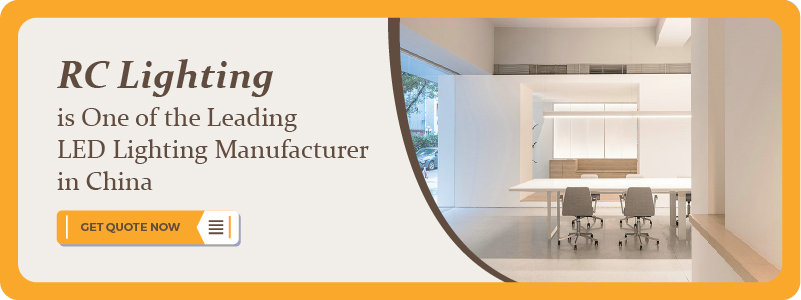What is LED Lighting?
LED Lighting is the new technology that has quickly replaced conventional lighting, i.e., incandescent, fluorescent, and HID lamps. LEDs (short for light-emitting diodes) derive their name from the central diode, which comprises semiconductor materials such as silicon and selenium.
LED lighting tends to generate light by passing an electric current through the semiconductor material that is the diode. In this case, electrical energy is used to generate visible light.
The origin of LEDs: Even though LED lighting has risen to surmountable fame recently, the technology was initially developed half a century ago, in the early 1960s. However, the lighting industry took quite some time to catch up and develop cost-effective LED solutions.
LED lighting solutions have proven to be far superior to their predecessors in all regards, which is why LED light bulbs and fixtures are quickly replacing traditional incandescent bulbs.
How do LEDs work?
The working mechanism of LEDs is quite simple. Visible light is produced by passing an electrical current through the semiconductor material. It works on the principle of electroluminescence. A brief overview of this work is mentioned as follows.
The underlying working principle: The LED is a semiconductor composed of an n-type and p-type semiconductor material doped by dipping into doping material. The introduction of other materials slightly alters the p-type and n-type. When power is applied, the electrons jump from the electron-rich to the electron-deficient terminal across the p-n junction. Visible light is generated using this activity of electron migration.
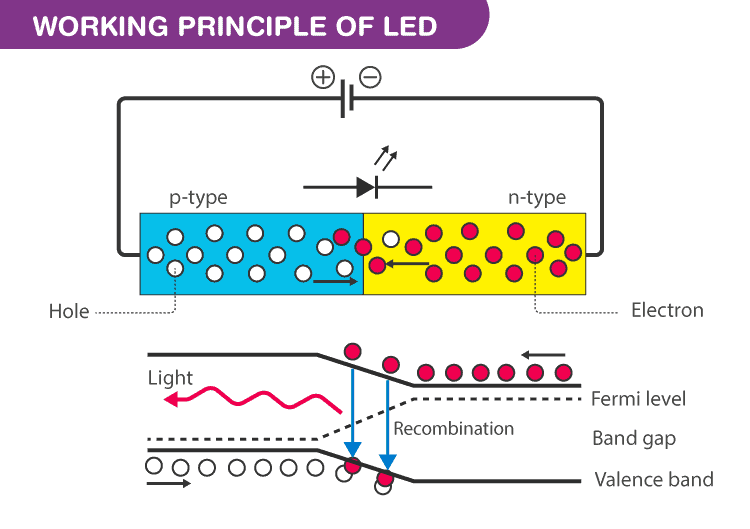
Unlike incandescent bulbs, visible light is generated when the electric current produces heat in the filament. On the contrary, LEDs generate visible light using electron migration in the semiconductor.
Advantages of LED Lighting
LED Lighting offers a plethora of benefits over conventional lights. Thus, traditional fluorescent and incandescent bulbs are being replaced by LED lights. We’ve mentioned some of the advantages of LED lighting as follows:
LED lighting is highly energy efficient
The primary advantage of LED lighting is its energy efficiency. LED lights produce the same light quality and output as traditional fluorescent and incandescent bulbs but consume only a fraction of the power. Statistically speaking, LED lighting consumes 18% more electricity than conventional fluorescent lamps and up to 85% less lighting when compared to traditional incandescent light bulbs. Thus, offering massive energy savings.
A significant fraction of electricity worldwide is used in the production of lighting. Adopting LED lighting not only consumes less energy and saves electricity but also reduces the electricity cost by a fraction.
LED lights generate less heat
Incandescent bulbs are extremely hot to the touch due to the absence of a thermal management mechanism. LED lighting fixtures use heat sinking and thermal management mechanisms, effectively dissipating heat into the surroundings. Thus, preventing the LED light fixture from heating up and causing high temperatures in the surroundings.
It also means that LED light bulbs can be used when temperature sensitivity is an issue. Therefore, an LED bulb can be used with heating and air conditioning systems. Less heat generation also saves the light fittings and surroundings from deterioration due to heat.
LEDs offer cost-effective lighting solutions.
One of the primary advantages of switching to LED lights is the massive cost saving on the electricity bill. Most individuals believe that LED lighting solutions are expensive due to the high initial cost. The truth is, the lower power consumption and maintenance cost offset the high setup cost. In the long run, LED lights to save money as they lower the electricity bill, require less maintenance and can be used for years on end.
Thus, LED lighting has a multiprong approach to saving money.
- First and foremost, energy efficiency will serve to reduce the running cost. It is because the cost will be saved on the average electricity bill due to lower energy consumption per lamp.
- Secondly, there will be no additional maintenance runs and no need to pay the electrician for frequent visits, so you save money on maintenance.
- You can also save money on the replacement as you will purchase lesser LED lamps and LED lights over the years.
LED lights have an instantaneous action
LED has an instantaneous mode of action. The LED bulbs and fixtures do not require a warm-up period leading to a delay in light production like conventional fluorescent tubes. On the contrary, LED bulbs switch on and off in nanoseconds without a lag.
They are also free from flicker, which inadvertently further increases their appeal.
LED requires less maintenance
Since the LED lights do not require frequent replacements, there is less worry about keeping up with maintenance. It inadvertently aids in bringing down the time, effort, and money required to keep up the maintenance.
This feature further paves the way for LEDs to be used in rather inaccessible and remote locations.
LED light bulb is more robust
LED technology uses semiconductors and thus is known as solid-state devices. The LED bulb is therefore comprised of solid material. Hence, it is also referred to as solid-state lighting.
There is no tube or filament inside the bulb, nor is there any glass prone to breakage. An LED bulb, thus, continues to work as usual even after being dropped as it is rugged. On the contrary, incandescent light bulbs are not rugged, and the fragile glass shatters into pieces on a single slip.
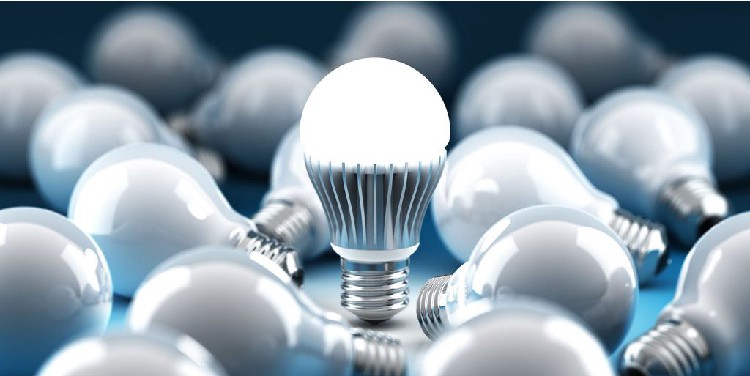
LEDs have a longer service life.
LED bulbs have a long life. Although the LED performance largely depends on usage, the average LED offers 35,000 and 80,000 operational hours.
Thus, it essentially means that the LED lamp, bulbs, and fixtures last for several years before the light tends to become dim and replacement is required. It only means that this light bulb lasts several times longer than traditional incandescent bulbs.
LEDs attract fewer bugs and insects.
It is a common phenomenon to witness bugs gathering around the light source. Incandescent light has proven to attract bugs and insects, making them inconvenient for outdoor use.
Some solid evidence suggests that LED lights attract fewer bugs and insects. Therefore, LED lighting can be extensively used as outdoor lighting instead of conventional outdoor light sources.
LEDs are more convenient to use
Unlike most conventional lighting technologies, where the bulbs or the light fixture abruptly stop working, LED lighting tends to dim over time. LED lighting fixtures lose 50-70% of their brightness over time.
Thus, it gives ample time to change the LED fixture, unlike blown-out incandescent bulbs and conventional flickering lights.
LED Lighting is environmentally friendly
In the present age of rampant environmental degradation and climate change, adopting a more green approach to all areas of life is crucial. It cannot help reverse the damage that has already been caused. However, it can help reduce the damage.
Light-emitting diodes are environmentally friendly means of lighting. There are several reasons why LED lights can be considered so.
- Primarily, LED light fixtures are energy efficient, which makes them suitable for the environment. Their highly energy-efficient nature makes them the perfect solution to conjunction with renewable energy sources such as solar power.
- Unlike conventional fluorescent light bulbs, LED lights do not contain mercury or other hazardous substances. A reduction in the use of mercury and lead will significantly benefit the environment. Thus, LED lighting is excellent for the environment.
- LED lights require lesser replacement and maintenance runs when compared to other conventional sources. This phenomenon helps a great deal in lowering the contribution to CO2 emissions.
CO2 emission is considered the primary contributor to deteriorating environmental conditions. Thus, all these reasons make LED lights a great source of green energy.
LED lights allow greater control
Unlike most conventional lighting technologies, LED lights allow greater control over the light output. It means one can adjust LED light bulbs’ brightness and light output. However, no such thing can be done in the case of conventional fluorescent lamps and incandescent lamps.
So, whether you want full brightness or a little less, it is all adjustable with dimming technology with LED lamps.
LED lighting is safer
The LED light bulbs enhance the safety factor by multi-folds. There are several reasons why LED bulbs are safer.
- Primarily, the LED bulbs do not contain any hazardous substances such as mercury which may lead to severe complications if ingested, inhaled, or even touched.
- The LED bulb is also rugged, making it less prone to accidents and thus perfect for use in homes with pets and children.
- Additionally, LED lamps and fixtures generate less heat, enhancing safety by reducing the chance of unpleasant accidents. Overall, LED light fixtures are incredibly safe to use.
LED systems offer directional light
Unlike most conventional lighting technologies, the light emitted by LED bulbs is not scattered in all directions.
While conventional lighting technologies emit light 360 degrees direct, LED ones focus the light 180 degrees around the source. You can play with beam angles and adjust them anywhere between 20 degrees to 120 degrees.
The LED uses total internal reflection that gathers light to increase the overall utility of light.
LED lighting offers diverse color solutions
Unlike traditional light sources that offer warm and white light only, LED Lighting offers a diverse color palette. The light-changing LED strip lights are particularly popular now. Various color spectrums can be produced through different colored LED lights, typically red, green, and blue, or RGBW.
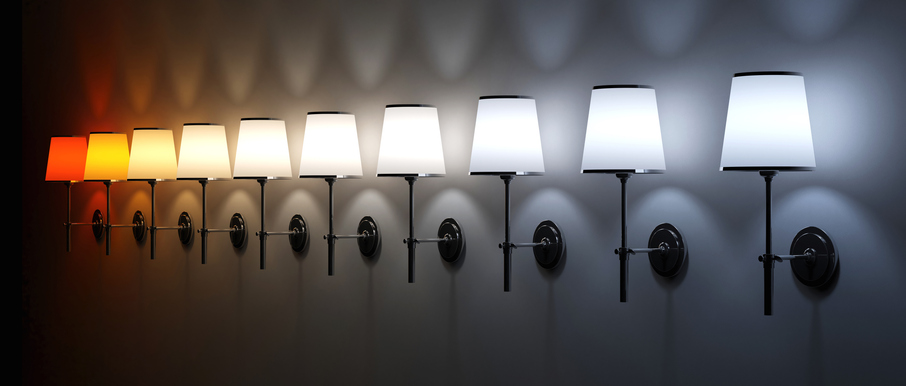
LED lighting is compatible with smart home applications
Unlike conventional light sources, LED technology is compatible with smart home solutions. With the rise in the use of Amazon Alexa and Google Home and the ease offered by smart home applications, their use has exponentially risen.
Thus, LED lights offer a brilliant solution to fully integrate your home and turn it into a smart home.
Disadvantages of LED Lights
With this many advantages of LED lighting, it is only natural to wonder what is the disadvantage of LED lights. One may also wonder whether there are any disadvantages in the first place.
However, virtually everything in the world its pros and cons. LED lighting also has a particular set of drawbacks. Some of the disadvantages are mentioned below:
LED lighting is temperature sensitive
The performance of LED lights is highly dependent on the ambient temperature of the environment where LED operation is carried out. If the LED light fixture, bulb, or lamp is subjected to high ambient temperatures, it could lead to the failure of the LED device. Thus, it can prove to be catastrophic, especially in sensitive applications.
LED lamp systems increase the blue hazard
The LED systems, particularly the white light sources, produced proportionally more blue light than what is defined as safe for the human eye. The blue light that results from blue and cool white LEDs adversely affects the human eye by increasing the incidence of glare and compromising vision.
Studies also indicate the role of blue light in the increased incidence of age-related macular degeneration and damage to photoreceptor cells.
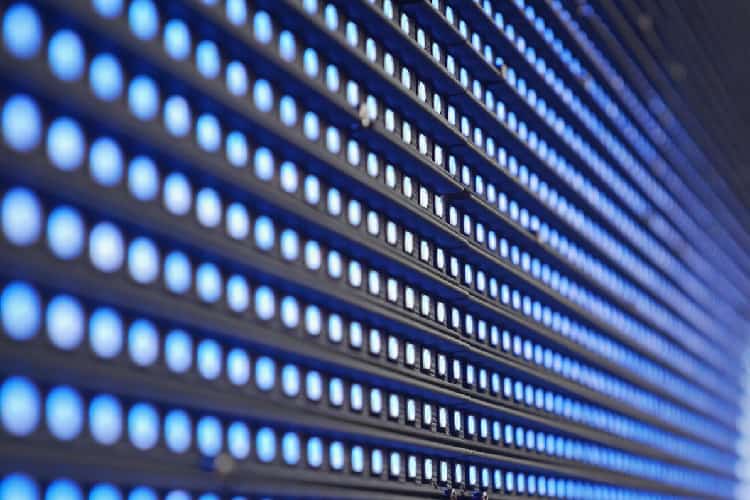
LED lights cause blue pollution
Most cool white LEDs emit a high proportion of blue light compared to several other conventional light sources, such as high-pressure sodium lamps, thus leading to a great incidence of light pollution.
The growing blue pollution adversely affects the circadian rhythms leading to a deterioration in sleep quality and, thus, overall quality of life.
Thus, considering the growing use of LED lights resulting in more light pollution, the International Dark-Sky Association has compiled a few recommendations for choosing the right lighting system.
The International Dark-Sky Association recommendations include using fully shielded fixtures and avoiding white light sources with a correlated color temperature above 3,000 K.
Most outdoor LED lights have correlated color temperatures of over 4000 K, which contributes to blue pollution as they are said to contribute up to 2.5 times more light pollution.
LED fixtures are extremely voltage-sensitive
The voltage and current of the LED fixtures ought to be maintained on the optimal operational levels, as a deviation from optimal tends to affect the lifespan of an LED fixture adversely.
The main reason for flickering in LEDs is disrupted power supplies.
LED fixtures do not allow spherical light distribution
Unlike the common fluorescent lamps and incandescent sources that disperse light in a spherical light field, the LED fixtures have a directional action and allow only a limited degree of divergence.
Conclusive Remarks
LED lights have been continually under development to make the most out of their benefits and adequately counter their drawbacks. Regardless of their disadvantages, LED lights are extensively used due to their advantages, particularly energy efficiency.
A walk-through of the advantages and disadvantages of LED lighting is aimed at bracing you with enough information to make an educated decision regarding the use of LED light sources in your homes, offices, and other areas.
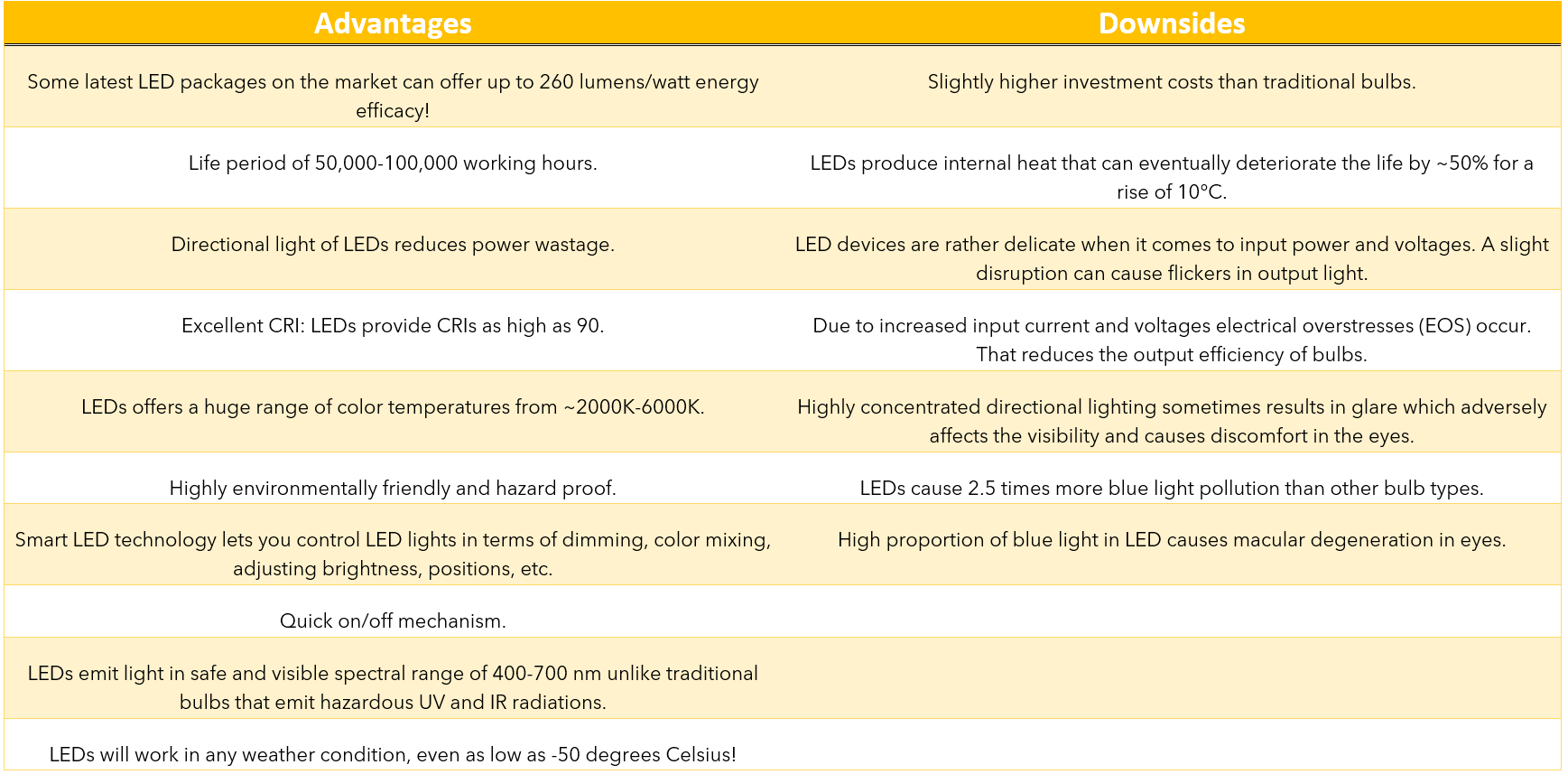
Why Buy LED Lights from RC Lighting?
The LED lights must always be purchased from a reliable manufacturer or provider. Due to the lack of standardization in the LED lighting industry, it is common to fall prey to poor-quality LED light providers. RC Lighting is a high-quality provider of all-encompassing LED light solutions.
RC Lighting provides high-quality lighting solutions at an extremely economical price compared to the rest of the competitors. Moreover, the company has experience of over a decade of providing high-quality LED lighting solutions.
RC Lighting is also a customizable LED lighting solution provider that tailors the lighting plans according to the customer’s requirements.
What makes it more lucrative is that each RC Lighting product comes with a warranty of 5 years which makes the company a highly dependable source of LED packages.
Ready to buy from RC Lighting? Contact us today.
